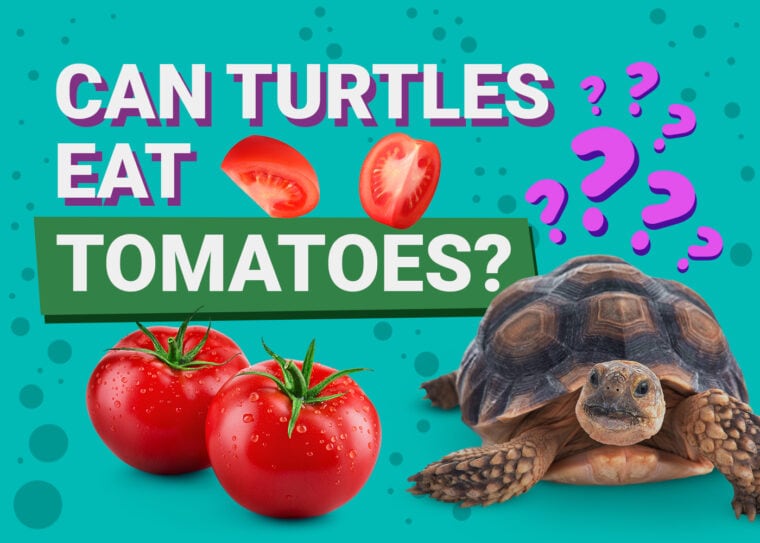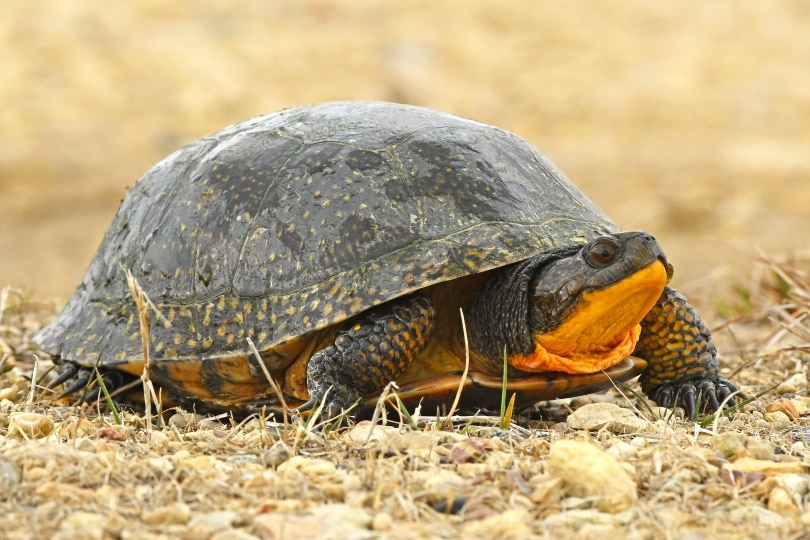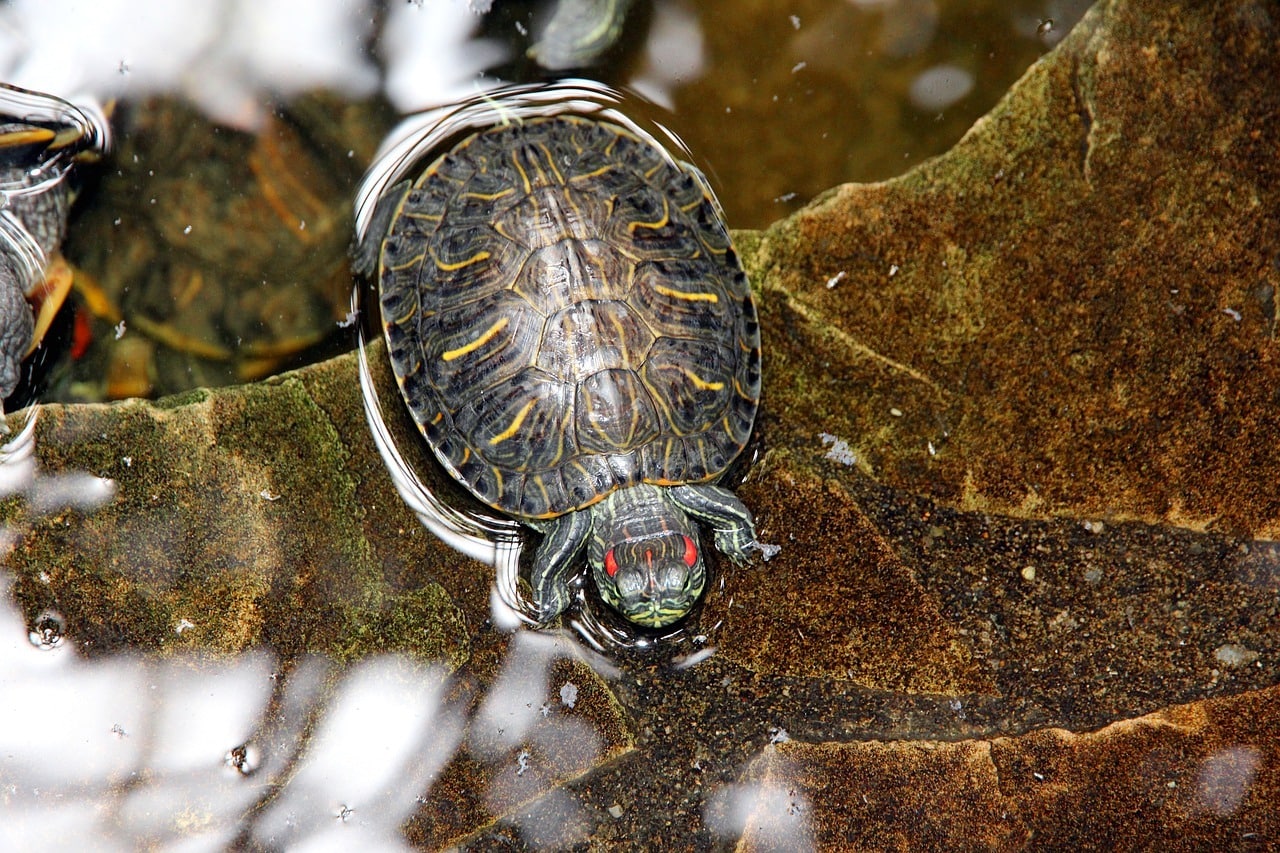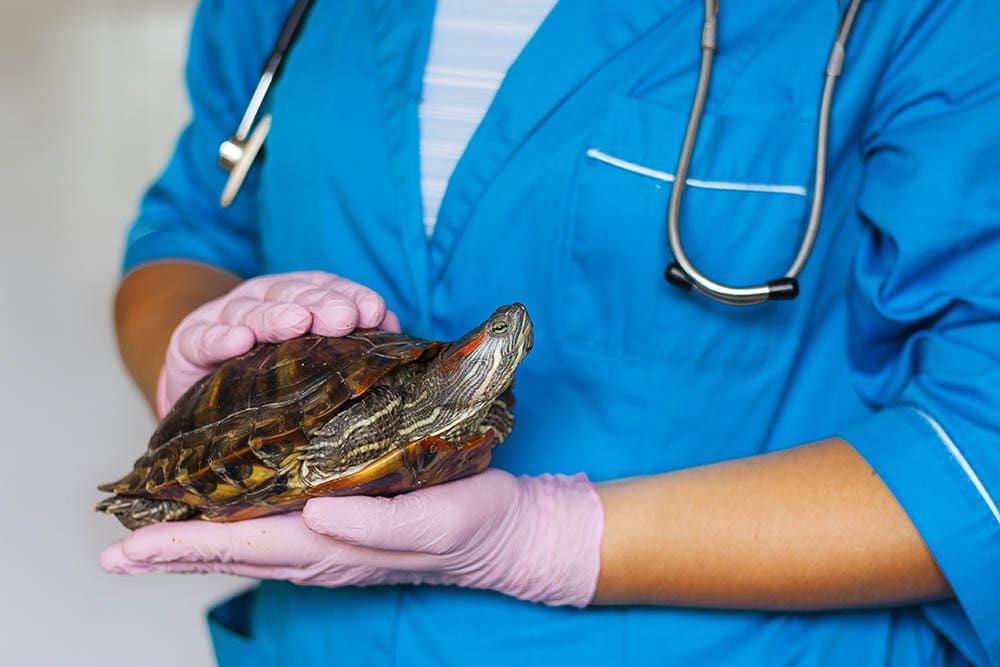
Turtles belong to the same taxonomic class (Reptilia) as alligators and crocodiles, and their ancestors date back millions of years ago, to the time of the dinosaurs. Most species of turtles kept as exotic pets today are omnivorous, requiring both plant and animal derived nutrients in their diet .
Commercial turtle foods are readily available in pet stores and can provide most pet turtles with sustenance. However, they aren’t considered nutritionally complete. Therefore, it is important to supplement your pet’s diet with species and life stage appropriate foods. For some turtles, this might warrant the inclusion of fruits into their diet. A common fruit found in many homes all over the world is the tomato. As a pet turtle owner, you might be wondering if tomatoes are safe for your pet.
Most omnivorous pet turtles can safely eat tomatoes; however, like all fruits, moderation is key when incorporating tomatoes into their diet.
Read on to find out more about this fruit and whether there are any precautions that you should take when feeding it to a turtle.
Turtles as Pets
Many species of turtles are kept as pets around the world. It goes without saying that it isn’t possible to make a generalized statement about their nutrition needs without specifying which species is being considered for the statement. In this article, we will focus on the freshwater turtles (such as the red eared sliders), and the genus of North American box turtles (Terrapene). This genus contains the popular Eastern box turtle, Terrapene carolina carolina.
Almost all popular pet turtle species are classified as omnivores. However, many of these species tend to lean towards a very meat-based diet as juveniles. As they approach adulthood, they then tend to shift towards a more plant-based diet (but still benefit from the inclusion of animal-based foods in their diets). Such a phenomenon is known as an otogenic shift.
This tendency for many species to shift their nutritional needs emphasizes the importance of a exotic or reptilian veterinarian’s input for your pet. Depending on your pet’s life stage, their acceptance of several foods (including tomatoes) might be limited.
Please keep in mind that your pet’s life stage is only one factor in determining their nutritional requirements. Several other factors play a role in their nutritional needs, too. In addition, it is important to emphasize that many species of turtles spend several years as juveniles and are slow to mature into adults. Therefore, their dietary transition should also be paced accordingly, and not rushed.

Are Tomatoes Safe for Turtles?
Tomatoes are considered safe for turtles. Veterinary literature for turtles has indicated that turtles enjoy tomatoes, and also lists tomatoes as a safe fruit for their diet 1. However, it also cautions against feeding pet turtles too much fruit.
A general recommended guideline for the portion of fruit in a healthy adult omnivorous pet turtle’s diet is as follows:
Please note that this quota of fruit should not consist of just one option. Instead, you should offer your pet a high variety of fresh fruits in their diet – with each fruit in an acceptable quantity. For example, consider meeting your box turtle’s fruit requirements with 5-6 different fruits rather than just tomates.
The Nutritional Benefits of Tomatoes
To better understand the nutritional benefits (and risks) of a food item, it is important to look at its nutritional analysis. 1
The nutritional analysis of other tomato varieties, such as the grape tomato, is similar.
From the data above, it can be concluded that tomatoes are mostly a source of water. Their sweetness is due to their carbohydrates (this includes the sugars found in the fruit). They do contain various vitamins as well, however, given the recommendation that fruit should only comprise a small portion of your pet turtle’s diet, this benefit is largely marginalized in the grand scheme of nutritional perks.
Though humans tout the Vitamin C present in tomatoes, this is largely a non-factor for pet turtles. Unlike us, they are able to make their own Vitamin C within their bodies.

The Nutritional Risks of Tomatoes
Analyzing a food’s nutritional composition also lets us identify potential risks with feeding too much of it.
Calcium & Phosphorus Ratio
The main nutritional drawback of tomatoes is their calcium-to-phosphorus ratio. These minerals should always be examined together when analyzing any food you wish to add to your pet turtle’s diet.
For healthy adult pet turtles, their diet should have a calcium-to-phosphorus ratio of anywhere between 1.5:1 and 2:1. This means the calcium should be around twice as much as the phosphorus. The recommended ratio for juvenile turtles and turtles that are breeding is considered higher.
In tomatoes, the calcium is much lower than the phosphorus; in fact phosphorus is found in more than double the quantity of calcium. This is considered a drawback because phosphorus balance in the body requires that it be in the correct proportion with calcium. This is because phosphorus naturally binds with calcium.
Whenever a pet turtle is fed high amounts of phosphorus, their body responds by pulling calcium out from the bones (including their shell) to restore the proper levels of minerals and reduce the excess phosphorus in the bloodstream. This usually isn’t an issue when minor adjustments are needed. However, a diet that is consistently low in calcium and high in phosphorus may lead to the loss of calcium from bone mass and can make the bones brittle and weak, leading to a condition called metabolic bone disease.
In addition, an inappropriate ratio of calcium to phosphorus is undesirable for the long-term health of a turtle because it may predispose them to kidney or parathyroid issues.
Sugar
Like all fruits, tomatoes do contain naturally occurring sugars. While the flavor these sugars provide might be appealing for us, they aren’t considered healthy or beneficial for pet turtles in excess.
Oxalates
Tomatoes contain a moderately high amount of oxalates. These are compounds which further interfere with the metabolism of calcium, and, in excessive amounts may lead to health issues, such as kidney stones.
How to Feed Tomatoes to Turtles
Feeding tomatoes to turtles is easy. Ensure that the stalk and leaves are removed and that the tomato is ripened and red before serving. Feeding your pet turtle any fresh produce involves three main principles:
Tomatoes can be served whole or sliced, depending on your turtle’s size. The skin and seeds of ripe tomatoes are safe for turtles to consume.
It is not advisable to feed your turtle the leaves of tomatoes or unripe tomatoes. Though there is no reported toxicity of tomato leaves in turtles, the leaves of certain plants of the same genus (Solanum) are considered mildly toxic to turtles. Examples of these plants include Nightshade (Solanum nigrum) and Jerusalem Cherry (Solanum pseudocapsicum).

Final Thoughts
Most omnivorous pet turtles can safely consume tomatoes. Therefore, tomatoes can be included in your pet’s meal plan as part of their fresh produce (which comprises fruit and vegetables). However, several factors need to be considered when it comes to formulating a meal plan for your pet. Therefore, it is important to ensure that you work very closely with a exotic or reptile nutritionist to make sure your pet is getting nutrition that is appropriate for them.
Related Reads:








